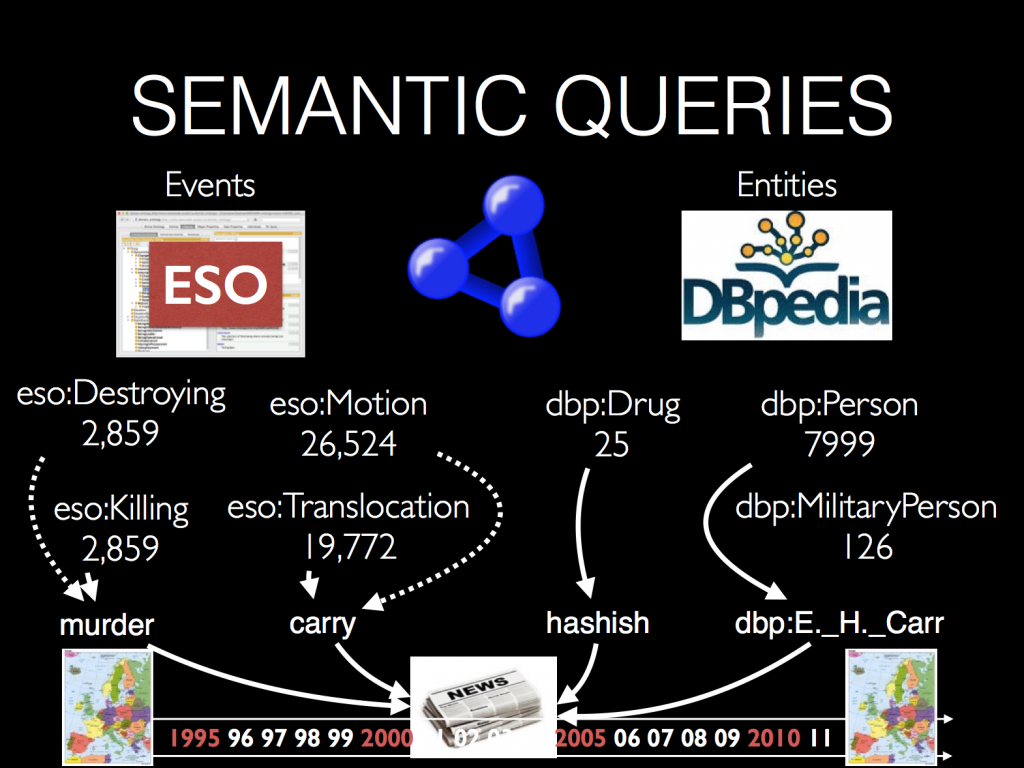New research methods for investigating criminal networks involved in illicit trades of humans, wildlife, and drugs: processing and visualizing patterns in big data sets: KIEM project creative industry (NWO Project number 314-98-030) (2014-2015)
Project coordinator of “New research methods for investigating criminal networks involved in illicit trades of humans, wildlife, and drugs: processing and visualizing patterns in big data sets”.
– View/download: KIEM presentation: New research methods for investigating criminal networks involved in illicit trades of humans, wildlife, and drugs on June 23, 2015
 ‘Semantic Queries’ in KIEM presentation: New research methods for investigating criminal networks involved in illicit trades of humans, wildlife, and drugs on June 23, 2015.
‘Semantic Queries’ in KIEM presentation: New research methods for investigating criminal networks involved in illicit trades of humans, wildlife, and drugs on June 23, 2015.
Project Description
This project which will establish a public-private partnership (PPP) encompassing different fields of knowledge and expertise to develop understandable and useful ways to visualize “big data news media” story lines of illicit trades in humans, wildlife, and drugs. The primary goal is to show the added value of this collaboration by defining a user context for specific forms of visualizing big data patterns in news media. These patterns serve as an investigative tool for purposes of crime monitoring, crime fighting, and policy making.
According to Yury Fedotov, Executive Director of the United Nations Office on Drugs and Crime (UNODC) human trafficking, wildlife crime and drug dealing are among the most profitable trafficking flows in the world. These forms of serious transnational organized crime require new forms of intelligence. In recent years, there is growing evidence of overlap between these forms of illicit trafficking. For law enforcement organizations and NGOs there is a pressing need to learn more about these developments and the organization of international trafficking networks.
Much of the data used to estimate the value of the illegal markets is based on seizures or media reports. However, the data analyses are often ad-hoc and anecdotal in nature without taking into account systematic evidence based on state of the art methods for performing big data analyses. The challenge of this proof of concept consortium building project is to develop efficient workflows for tailoring the big data analysis visualizations to the specific needs of users (NGOs, police and other stakeholders).

